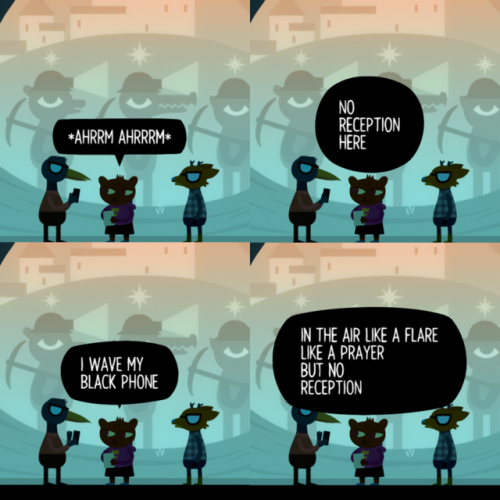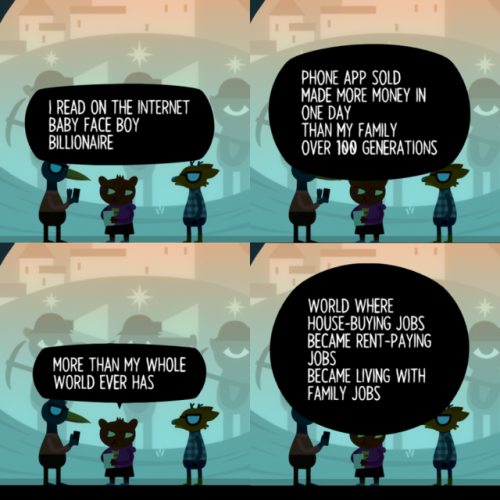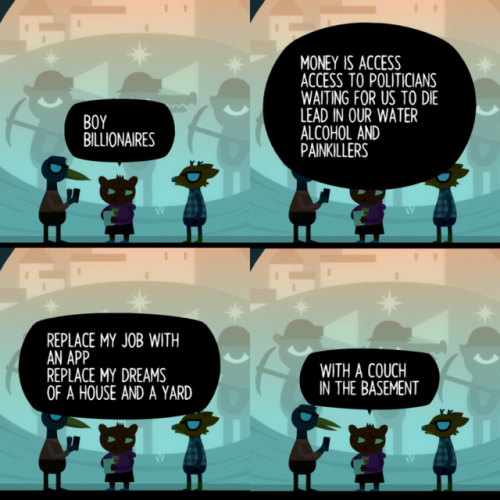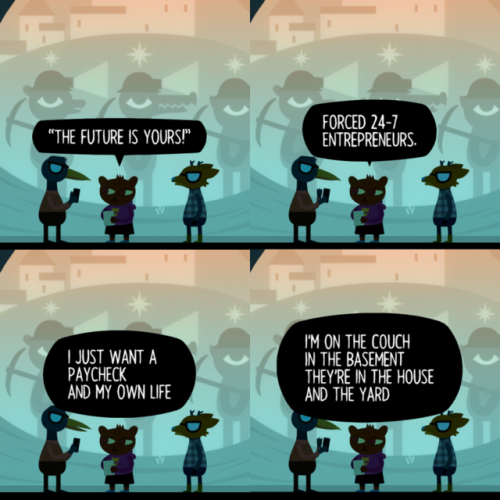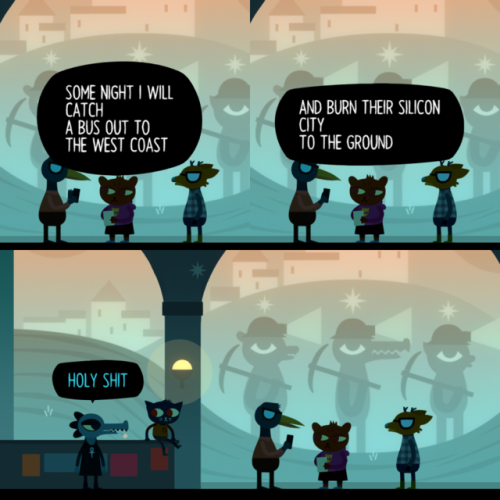I Believe It Was Both, In A Way. The Story I Heard Was That Pluto Started Life As A Study To Determine
I believe it was both, in a way. The story I heard was that Pluto started life as a study to determine if it was possible to build a strategic bomber that was powered by a nuclear reactor. However, after they found the shielding that was necessary to keep the plane’s crew from dying added too much weight to the plane, someone asked the obvious question of “what if the plane didn’t have a crew?” Ironically, once development started on Pluto, it was eventually decided that its reactor didn’t need any shielding anyway, and would just vomit reaction products out the back as it flew across the Soviet Union, just to make sure they got everyone. (Given the projected flight path Pluto would have needed to take to get from its holding pattern at the North Pole to the Soviet Union, large parts of Europe would have been doused in Pluto’s exhaust, which feels like a metaphor for American-European relations, somehow.) While some prototype ramjets were built, the project was eventually canned by the early 1960s due to improvements in conventional rocket engines for ICBMs, the Partial Test Ban Treaty, and the fact that even the nuke-happy generals and eggheads in the Defense Department thought the whole concept was a bit much. (While I have no confirmation on this, I have also heard that another nail in Pluto’s coffin came when someone working on the project was asked what the United States could do if the Soviets built and launched their own version of Pluto. Their precise answer is unknown, but it boiled down to “die, mostly.”) Also, with Orion I believe that there were early phases of the project where the vehicle was intended to be launched from the ground with its own nuclear drive, but again the Partial Test Ban Treaty put an end to that idea.

More Posts from Nesterov81 and Others
“Congratulations son, you’ve reinvented Romulans.” (Actually I imagine most Romulans would find these guys incredibly tedious to be around.)









The question I've been asking is why Sandra Newman decided to go with Julia instead of Winston Smith's ex-wife Katherine. Julia has the much bigger part in Nineteen Eighty-Four, but I've come to find Katherine interesting precisely because her presence in the story is so minimal. Winston describes her as a conformist who just recites whatever doggerel the Party puts out, but the stridency of this depiction makes me wonder if Winston himself was engaging in his own little bit of historical revisionism and narrative framing. Additionally, while Katherine and Winston are still technically married, by the beginning of the novel they are for all intents and purposes separated, and IIRC Winston's narration makes it fairly clear she was the one who did the separating. Perhaps there's room there for a story of the contradictions, complexities, and compromises of a true believer.
What do we think of the feminist 1984 retelling? Am I being kneejerk eye-rolling for no reason?
Not gonna lie, first time I saw this post I immediately thought of that scene in Prometheus where Fifield splashes the hammerpede’s blood onto his helmet and his visor just melts onto his face which, while not the most horrific way to die, is definitely up there in the top 20.

Geode (x)
Question: do hallucinations of past events count as “time travel” for the purposes of this watch-through? Would “The Inner Light” come during your run of TNG, or should you watch the Kamin scenes when you get to c. 1368 AD? Do you watch the hallucinatory Occupied Terek Nor scenes of “Things Past” during season 5 of DS9, or before you start TNG?
And what about erased future timeline? How do you fit in “All Good Things,” “The Visitor,” and “Endgame,” as well as ENT’s “Twilight?” Do you watch them chronologically, or do them all after as a sort of appendix to the project?
Gotta admit, this is a pretty dumb idea...but it’s exactly the sort of thing a hyper-obsessive nerd with a editing suite could devote a decade of his or her life to splicing together. I suppose it might make a cool endurance-style video installation.
I have just had a worst best idea:
Watch Star Trek in in-universe chronological order… Time travel included.
So you start by watching the 3ish minute scene of Voyager where a Q takes Voyager back to the big bang, then you move to the 4ish minute scene of Next Generation where Q takes Picard to the start of evolution on Earth, then to the DS9 episode where they go back to the 1930′s, then Star Trek 4 in the 1970′s.
Then you’re finally able to start watching Enterprise.
My go-to source for the history of scientific romances is Brian Stableford’s 1985 book Scientific Romance in Britain 1890-1950. (While long out of print, this book is worth its weight in gold.) In Stableford’s account, scientific romances are very much the products of the environment they evolved from. Before the 1890s, publishing in Britain was divided into two rigid categories. On the “respectable” side were the great triple-decker novels, conservative in both style and content, and physically inaccessible to anyone who wasn’t wealthy or who didn’t have access to a circulating library. On the less reputable side were, of course, the penny dreadfuls; cheap to make, quick to read, easy to forget, and not that well-written. Scientific romances (and to a certain extent modern sf) tend to work best in the range between short stories, novellas, and single novels; long enough to properly extrapolate from a central idea, but not so long as to wear out their welcome. It was only at the end of the 19th century, with the decline of the triple-decker, the rise of a literate middle class, publications that catered to them, and of writers that could comfortably support themselves writing for this new audience, that scientific romances had the space and opportunity to emerge. Naturally, this was a different class of writers with different influences that those who had written the gothic works from earlier in the century, so scientific romances evolved in both style and content in a much different direction. (As an example, scientists in 19th-century Britain had a unique tradition of penning essays to explain their theories and their significance to a more general audience, a tendency that was absorbed wholeheartedly into the scientific romance, to the point that both scientists and novelists tried their hands at both essays and stories every so often.)
I was thinking about the literature of 1897 and it got me thinking about the Scientific Romances and how they differ from the Gothic Romances or Gothic Horrors of the age. Clearly, there is some overlap and Frankenstein (much earlier but still relevant) crosses those borders many time without showing a passport for either but by the late 19th you couldn't really compare say 'The War of the Worlds' to 'Dracula'. Where did they diverge so wildly? Or did they?
That’s a really good point, and I’m sorry I took so long to get to this question! Arguably, Frankenstein himself brings this up- he started out reading ancient mystic texts and moved to more scientific ones later- but I guess there started to be a clearer divide between what we’d call fantasy and what we’d call science fiction as science itself became better known. You could probably write gothic science fiction in the mode of Asimov, where the science is there to set up philosophical and psychological issues- I’d certainly read about the drama between robot heirs to their creators’ estate and legacy- but the divide certainly feels there. Returning to H. G. Welles, maybe The Invisible Man is the midpoint? Or maybe it’s when “scientist” became a common enough profession to not seem mysterious? Any followers with ideas on this subject, help me out here!
I may not understand any of what’s going on in the show, and I may still believe that Algernon is a kind of furniture polish, but hearing you guys talk about Betterman always brightens my day.
I feel not good but I did manage to record Anime Club with @plumerium
Well I guess it’s time to chip off the rust and draw some Kuvira again jesus.

-
 faceinacrowd liked this · 1 year ago
faceinacrowd liked this · 1 year ago -
 lain-vics liked this · 2 years ago
lain-vics liked this · 2 years ago -
 brickeens reblogged this · 3 years ago
brickeens reblogged this · 3 years ago -
 nooobark liked this · 3 years ago
nooobark liked this · 3 years ago -
 lemonlimekodkod liked this · 3 years ago
lemonlimekodkod liked this · 3 years ago -
 cheetahgirlmuscles reblogged this · 3 years ago
cheetahgirlmuscles reblogged this · 3 years ago -
 cheetahgirlmuscles liked this · 3 years ago
cheetahgirlmuscles liked this · 3 years ago -
 titleknown liked this · 3 years ago
titleknown liked this · 3 years ago -
 clean-acts-for-reasonable-prices liked this · 3 years ago
clean-acts-for-reasonable-prices liked this · 3 years ago -
 animeandcatholicism reblogged this · 3 years ago
animeandcatholicism reblogged this · 3 years ago -
 reji8627 liked this · 3 years ago
reji8627 liked this · 3 years ago -
 upfrog reblogged this · 3 years ago
upfrog reblogged this · 3 years ago -
 isoddtosay liked this · 3 years ago
isoddtosay liked this · 3 years ago -
 wattse liked this · 3 years ago
wattse liked this · 3 years ago -
 carolinskyy reblogged this · 3 years ago
carolinskyy reblogged this · 3 years ago -
 carolinskyy liked this · 3 years ago
carolinskyy liked this · 3 years ago -
 lord-thundercastle liked this · 3 years ago
lord-thundercastle liked this · 3 years ago -
 kad-marek liked this · 3 years ago
kad-marek liked this · 3 years ago -
 teslanik reblogged this · 3 years ago
teslanik reblogged this · 3 years ago -
 desertrommel reblogged this · 3 years ago
desertrommel reblogged this · 3 years ago -
 brapclinic reblogged this · 3 years ago
brapclinic reblogged this · 3 years ago -
 brapclinic liked this · 3 years ago
brapclinic liked this · 3 years ago -
 red-faced-wolf reblogged this · 3 years ago
red-faced-wolf reblogged this · 3 years ago -
 the-rage-15 liked this · 3 years ago
the-rage-15 liked this · 3 years ago -
 jdeko reblogged this · 3 years ago
jdeko reblogged this · 3 years ago -
 wagenenr reblogged this · 3 years ago
wagenenr reblogged this · 3 years ago -
 silverandspessartine reblogged this · 3 years ago
silverandspessartine reblogged this · 3 years ago -
 silverandspessartine liked this · 3 years ago
silverandspessartine liked this · 3 years ago -
 pinkosock reblogged this · 3 years ago
pinkosock reblogged this · 3 years ago -
 excusemethatsnotcanon reblogged this · 3 years ago
excusemethatsnotcanon reblogged this · 3 years ago -
 andyoubirdcansing liked this · 3 years ago
andyoubirdcansing liked this · 3 years ago -
 officialkrubs reblogged this · 3 years ago
officialkrubs reblogged this · 3 years ago -
 stop-entropy-lie-down liked this · 3 years ago
stop-entropy-lie-down liked this · 3 years ago -
 petroplant reblogged this · 3 years ago
petroplant reblogged this · 3 years ago -
 lovetacosandburritos reblogged this · 3 years ago
lovetacosandburritos reblogged this · 3 years ago -
 lovetacosandburritos liked this · 3 years ago
lovetacosandburritos liked this · 3 years ago -
 omnipotentdogss reblogged this · 3 years ago
omnipotentdogss reblogged this · 3 years ago -
 omnipotentdogs liked this · 3 years ago
omnipotentdogs liked this · 3 years ago -
 upfrog liked this · 3 years ago
upfrog liked this · 3 years ago
Hello there! I'm nesterov81, and this tumblr is a dumping ground for my fandom stuff. Feel free to root through it and find something you like.
215 posts
